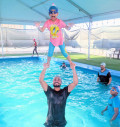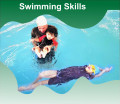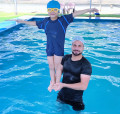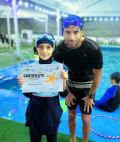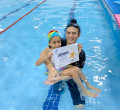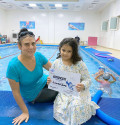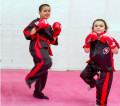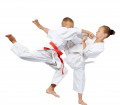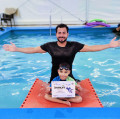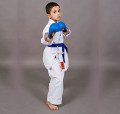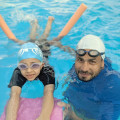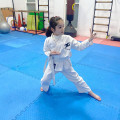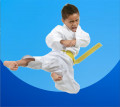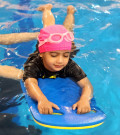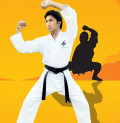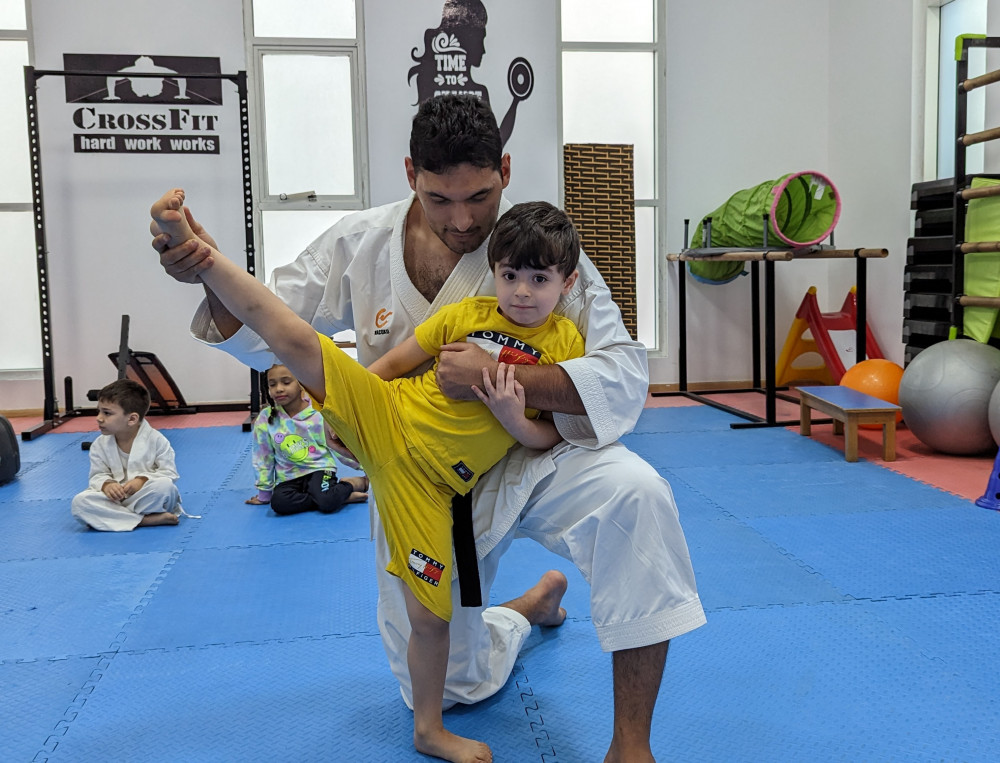
Karate for kids lets learn roundhouse kick
2023-12-09 - karateIntroduction
Karate is not just a sport; it's a discipline that instills
values, hones skills, and fosters personal development. In recent years, the
popularity of karate for kids has soared, and one particular technique, the
roundhouse kick, has become a focal point in their training. Let's dive into
the world of karate for kids and explore the art of the roundhouse kick.
The Basics of Karate
Before delving into the specifics of kicks, it's crucial to
understand the basics of karate. Karate is a traditional martial art that
originated in Okinawa, Japan. It emphasizes striking techniques, such as
punches, kicks, knee strikes, and elbow strikes. The practice of karate for
kids goes beyond physical fitness; it cultivates discipline, respect, and
self-control.
Importance of Martial Arts for Kids
Enrolling your child in martial arts brings a plethora of
benefits. Besides the obvious physical advantages, such as improved flexibility
and strength, karate instills mental fortitude. Kids learn to focus, follow
instructions, and respect their peers and instructors. These skills are
invaluable not just in the dojo but in all aspects of life.
Benefits of Roundhouse Kick in Karate
The roundhouse kick, known for its versatility and power, is
a cornerstone of karate. Executed by a swift circular motion, this kick targets
the midsection and head, making it a formidable offensive move. For kids,
mastering the roundhouse kick enhances their coordination, balance, and
agility.
Learning Roundhouse Kick: Step by Step Guide
Now, let's break down the roundhouse kick into manageable
steps for young karate enthusiasts. Begin with a solid stance, pivot on the
supporting foot, and whip the kicking leg in a circular motion. Emphasize
proper technique over power initially, ensuring a gradual progression to more
forceful kicks. Consistent practice and guidance from a skilled instructor are
key.
Common Mistakes to Avoid
While learning any martial art, mistakes are inevitable.
However, some common errors can hinder progress. Encourage kids to maintain
balance, avoid overcommitting to kicks, and emphasize controlled movements.
Correcting these mistakes early ensures a solid foundation for future
advancements.
Tips for Parents: Supporting Your Child's Karate Journey
As a parent, your role extends beyond driving your child to
karate class. Engage in conversations about their progress, attend
demonstrations, and create a positive home environment that complements their
martial arts journey. Your support is instrumental in their growth and
commitment to karate.
Karate Gear for Kids
Equipping your child with the right gear is essential for
their safety and comfort during karate practice. Ensure they have a well-fitted
gi (uniform),protective gear for hands and feet, and a mouthguard. The right
gear not only safeguards against injuries but also enhances the overall karate
experience.
Building Discipline and Focus Through Karate
One of the most significant advantages of karate for kids is
the development of discipline and focus. The structured environment of a karate
class, with its rituals and etiquette, teaches children the importance of
respect, punctuality, and dedication.
Boosting Confidence in Kids
Karate empowers children by setting achievable goals and
celebrating their accomplishments. Each belt progression serves as a tangible
marker of their growth, boosting confidence and self-esteem. This newfound
confidence often extends to other areas of their life, creating a positive
ripple effect.
Karate as a Fun Physical Activity
Beyond the serious aspects of discipline and focus, karate
is undeniably fun for kids. The dynamic nature of the practice, combined with
interactive drills and games, makes karate an engaging physical activity. It's
a place where kids not only learn but also enjoy the process.
Karate Classes: Finding the Right Fit
Choosing the right karate class for your child is crucial.
Consider the instructor's experience, class atmosphere, and the overall
philosophy of the school. Some dojos focus on competition, while others
prioritize character development. Find a balance that aligns with your child's
interests and goals.
Safety Measures in Karate for Kids
Safety is a top priority in any martial arts class. In
karate, instructors are trained to create a safe environment, teaching kids to
respect their training partners and follow safety guidelines. Emphasize the
importance of communication with instructors if any concerns arise.
Success Stories: Kids Excelling in Karate
Highlighting success stories within the karate community
inspires both parents and kids. Interviewing young karate achievers can offer
valuable insights into the transformative power of martial arts. These stories
serve as motivation for those just starting their journey.
Conclusion
In conclusion, karate for kids, with its emphasis on values,
discipline, and the roundhouse kick, is a holistic approach to childhood
development. Beyond the physical skills, karate instills qualities that shape
resilient, focused, and confident individuals. As you embark on this journey
with your child, remember that the benefits extend far beyond the dojo.







.jpg)















































